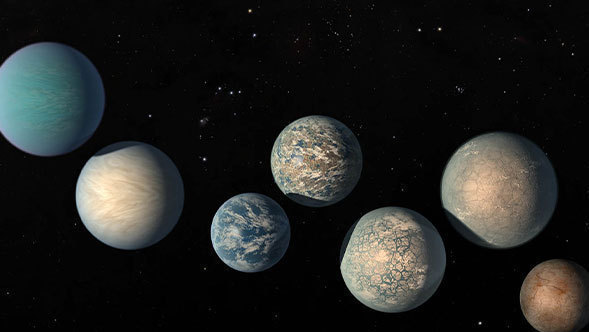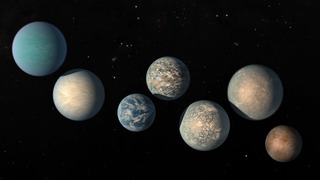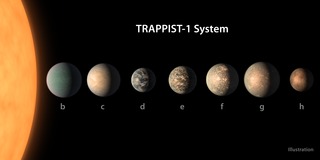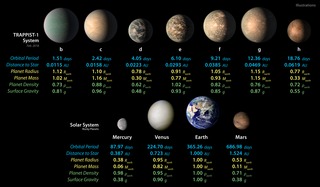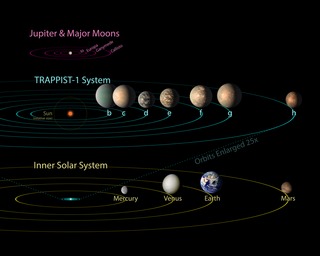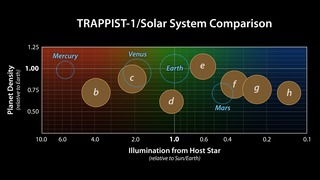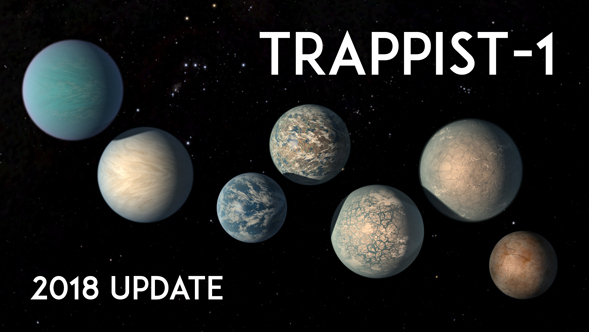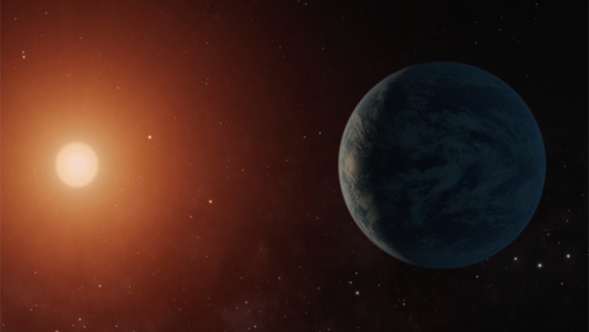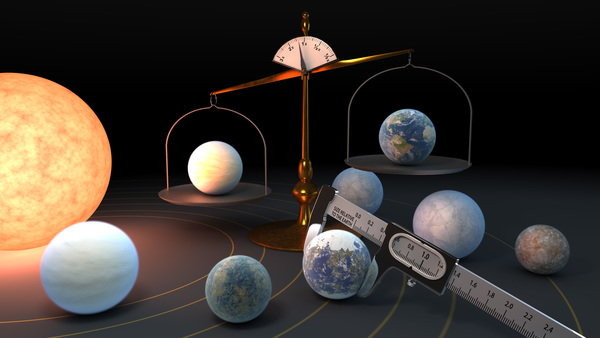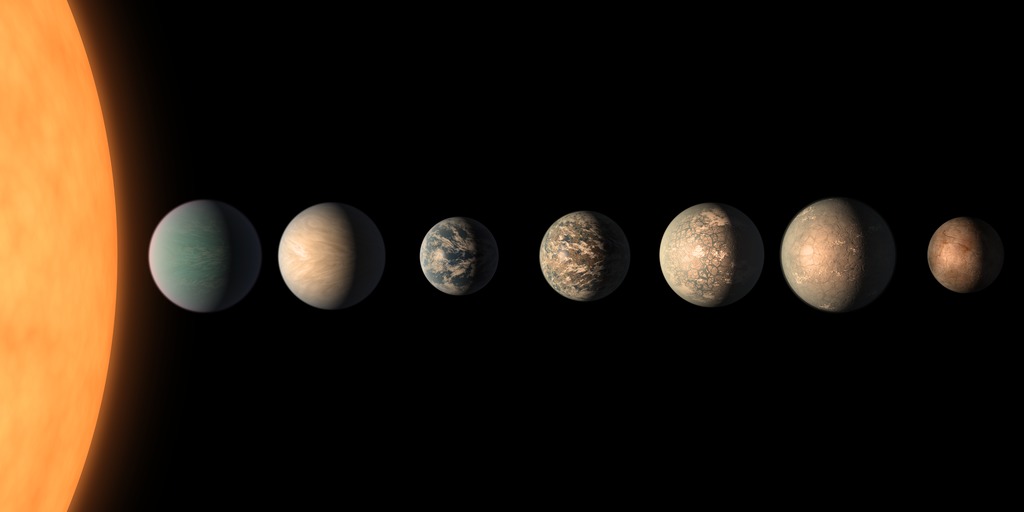
Credit: NASA/JPL-Caltech/R. Hurt, T. Pyle (IPAC)
Artwork • February 5th, 2018 • ssc2018-04b2
ssc2018-04b2
This artist's concept shows what the TRAPPIST-1 planetary system may look like, based on available data about the planets' diameters, masses and distances from the host star, as of February 2018.
This image represents an updated version of one originally created in 2017. The planets' appearances were re-imagined based on a 2018 study using additional observations from NASA's Spitzer and Kepler space telescopes, in addition to previous data from Spitzer, the ground-based TRAPPIST (TRAnsiting Planets and PlanetesImals Small Telescope) telescope and other ground-based observatories. The system was named for the TRAPPIST telescope.
The new analysis concludes that the seven planets of TRAPPIST-1 are all rocky, and some could contain significant amounts of water. TRAPPIST-1 is an ultra-cool dwarf star in the constellation Aquarius, and its planets orbit very close to it.
The form that water would take on TRAPPIST-1 planets would depend on the amount of heat they receive from their star, which is a mere 9 percent as massive as our Sun. Planets closest to the star are more likely to host water in the form of atmospheric vapor, while those farther away may have water frozen on their surfaces as ice. TRAPPIST-1e is the rockiest planet of them all, but still is believed to have the potential to host some liquid water.
In this illustration, the relative sizes of the planets and their host star, an ultracool dwarf, are all shown to scale.
About the Object
- Name
- TRAPPIST-1
- Type
- Planet > Type > Terrestrial
- Star > Spectral Type > M
- Distance
- 39.6 Light Years
